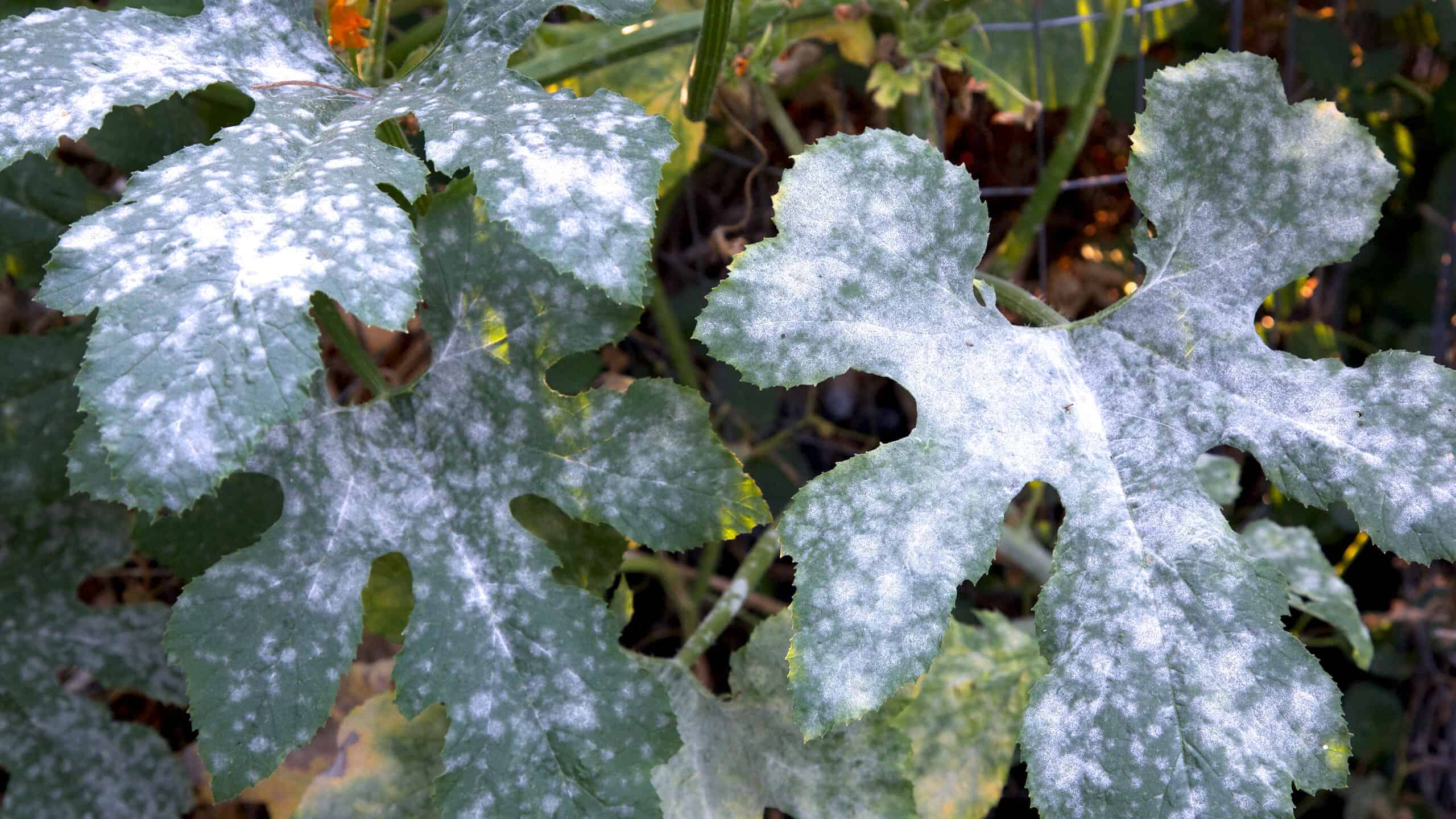Powdery mildew is a widespread condition caused by hundreds of different types of fungi, and it has the potential to infect over 10,000 different plant species. Given the issue's prevalence, many ask if there is a way to mitigate it without resorting to harmful drugs. Milk and baking soda are the most frequently used home treatments. However, which one is preferable, and do they even work?
Alternating therapies weekly will prevent the fungi from building up a resistance to your DIY spray. Alternate between baking soda and milk every week. It's best to sprinkle the leaves with water or a home remedy first thing in the morning so they can dry before nightfall.
- The must-have convenient reference guide for every home cook!
- Includes more than 8,000 substitutions for ingredients, cookware, and techniques.
- Save time and money on by avoiding trips to grab that "missing" ingredient you don't really need.
What is Powdery Mildew?
When a plant starts to be overrun by fungi, a mildew film of spores will grow on the upper surface of the leaves. The wind then carries these spores to neighboring plants. If your plant is severely infected with powdery mildew, it will stunt its growth and produce lower-quality fruit.
Widespread plant species are susceptible to the fungal disease known as powdery mildew. Various species of powdery mildew can cause damage to a wide variety of plants. Some of the most typical garden victims are:
- Vegetables in the gourd, pumpkin, cucumber, and melon families
- Vegetables that bloom at night, sometimes known as nightshades
- Roses
- Foodstuffs like beans and peas (legumes).
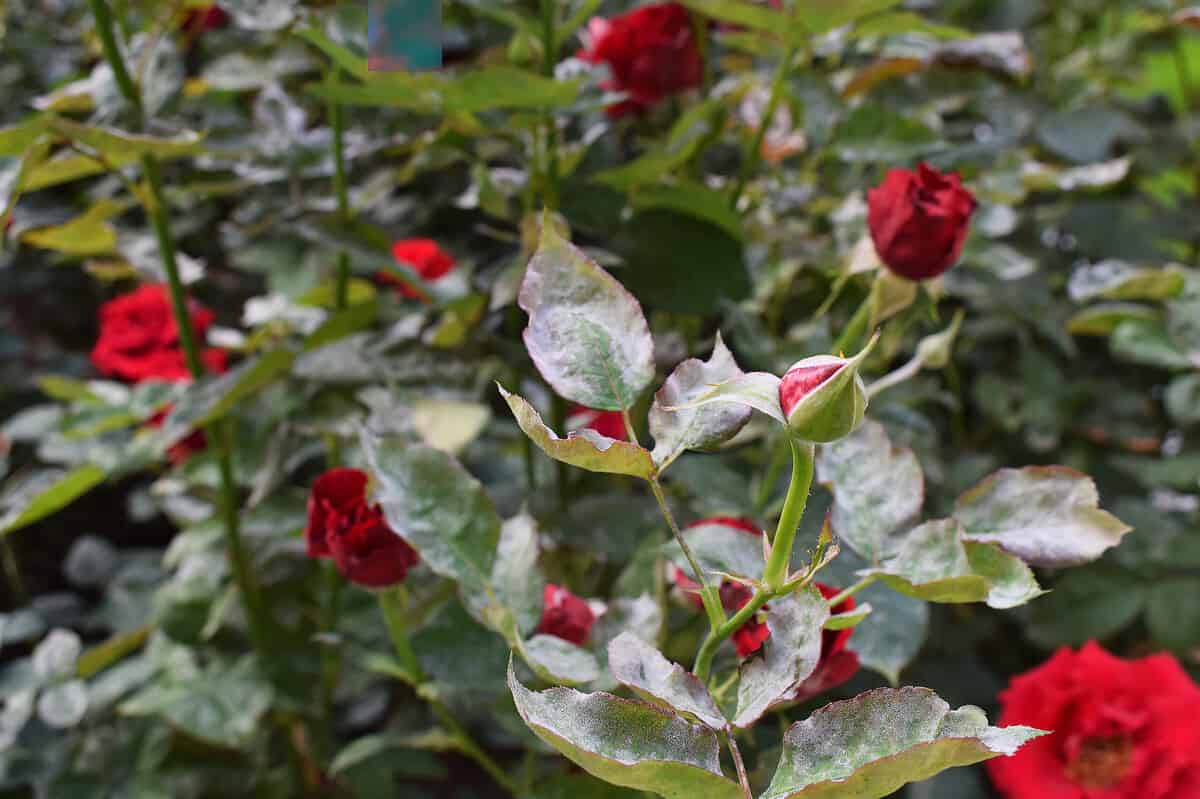
©Bunina Darya/Shutterstock.com
Powdery Mildew: What Causes It?
My phlox hasn't been affected by powdery mildew because there aren't enough fungi that cause it, but rather because there are so many distinct varieties. You won't find the same type of mildew on your beans or roses as you do on your squash. Three types of powdery mildew fungus can infect cucurbits and thrive in humid and dry conditions. The wind carries fungus spores and is, therefore, difficult to avoid. It's no wonder the squash always seems to get smashed.
Where Does Powdery Mildew Typically Appear?
Although it requires relatively high relative humidity (i.e., humidity around the plant), powdery mildew thrives in warm (60-80°F / 15-27°C) and dry regions. Temperatures above 90 degrees Fahrenheit (32 degrees Celsius) also restrict its development, as do wetter, cooler climates. It also has a more significant impact on plants growing in indirect light than on those in full sun.
Wind is the most common vector for dispersing powdery mildew spores to your garden, but latent spores in decaying vegetation or weeds can also play a role.
Vulnerable Plant Species
In the right conditions, powdery mildew can infect almost all plants except gymnosperms like conifers. The shortlist of vulnerable plants reads like a who's who of flora!
The following ornamental plants are vulnerable to this attack:
- Bee balm asters
- Begonias
- Dahlias Delphiniums
- Hibiscus
- Lilacs
- Mums
- Peonies
- Succulents
- Verbena and Zinnias.
Vegetables and fruits, on the other hand, include:
- Apples
- Beans
- Beets
- Carrots
- Cantaloupe
- Cucumbers
- Eggplant
- Grapes Onions
- Parsnips
- Pears
- Peas
- Peppers
- Pumpkins
- Squash Strawberries
- Tomatoes
- Watermelons
Apple and avocado trees, as well as the herbs cilantro and rosemary, are vulnerable to infection. African violets and poinsettias are only two of the many houseplants that are susceptible to this illness when brought indoors.
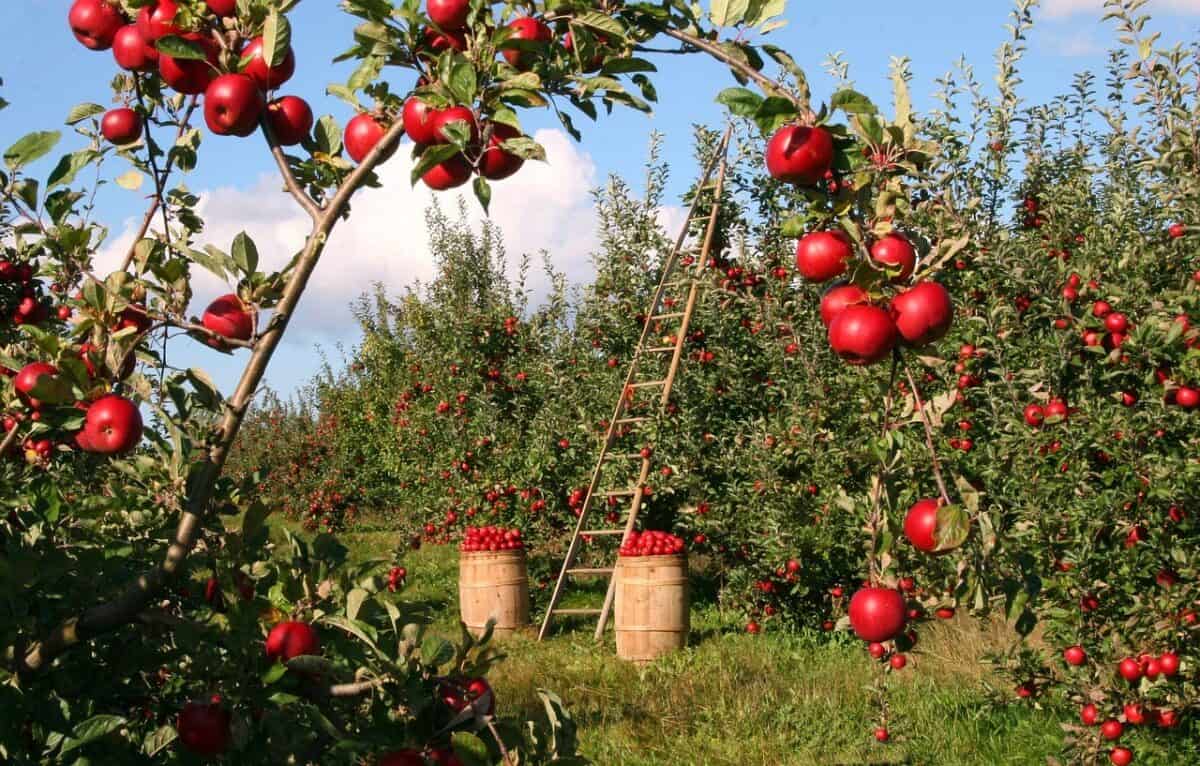
©jewelspics/Shutterstock.com
Baking Soda Vs. Milk
Powdery mildew can be mitigated by spraying the plant's foliage with either baking soda or milk, and both methods are effective. Nonetheless, a 2007 study found foliar milk sprays were more effective than baking soda in preventing powdery mildew.
Powdery mildew can be reduced by 85-90% with weekly foliar sprays containing 40% milk in a greenhouse, according to the study. However, the results of these studies did not generalize to those conducted in the open field, where success rates frequently ranged from 50% to 70%.
There is still some mystery surrounding the process that makes the milk spray reasonably successful, but scientists are progressing. Both baking soda and milk have been shown to reduce powdery mildew by changing the pH of the leaf's surface, making it more alkaline and less conducive to the growth of mildew spores.
Milk, on the other hand, outperforms baking soda, and the pH may be just one of the reasons that cause a decrease in powdery mildew activity.
Scientists have found that baking soda does not eradicate powdery mildew but keeps the environment too acidic for the fungus to multiply. When you cease using it, the pH returns to its natural acidic state and the fungus spores begin their average reproductive rate.
Baking Soda
Baking soda (sodium bicarbonate) has been tested as a fungicide since the 1930s, and although being able to limit the growth of molds in the lab, it is useless on plants.
Washington State University's Associate Professor of Plant Pathology and Extension Specialist, Dr. Linda Chalker-Scott, thinks it could effectively prevent the spoilage of recently harvested fruits and vegetables.
However, it is not something that would be suggested for use to combat powdery mildew. However, potassium bicarbonate, a chemically similar molecule, is used in some fungicides and other ingredients. Among these are products like Kaligreen. Arbico Organics also sells a product called MilStop.
The Organic Materials Review Institute (OMRI) has listed both formulations as suitable for use in organic gardening and the home.
Sprays Made With Baking Soda
Baking soda is an ingredient in several of these treatments. Be mindful that baking soda can burn plants, and that too much of it can deplete the soil of essential nutrients like calcium, magnesium, and iron. Instead of baking soda, you can use potassium bicarbonate. Make sure these sprays won't harm your plants by trying them out in a limited area first.
- In a gallon of water, combine 1 tablespoon of baking soda, 1 tablespoon of vegetable oil, and 1 teaspoon of dish soap.
- Add 4 tablespoons of baking soda and 2 tablespoons of Murphy's oil soap to 1 gallon of water and stir until dissolved.
- Vinegar and water, 2–3 teaspoons per gallon. Because vinegar can potentially burn plants, you should try this out first.
- Neem acts as a natural fungicide. Observe the label's suggested usage.
- The ratio of milk to water should be 1 to 10.
- Even though it's not certified organic, some people swear by mouthwash as a fungicide. The suggested ratio is one cup of mouthwash to three cups of water.
- Alternating therapies weekly will prevent the fungi from building up a resistance to your DIY spray. Alternate between baking soda and milk every week. It's best to sprinkle the leaves with water or a home remedy first thing in the morning so they can dry before nightfall.
Try to find mildew-resistant plants when you're ready to replenish your flower beds. Since tender new growth is easily infected, it is important not to over-fertilize with high-nitrogen fertilizers. Put some distance between plants to help the airflow. Cut off lower leaves if you see any signs of infection. Be sure to provide adequate sunshine for your plants. The best treatment is prevention.
Milk
Spraying milk on affected plant parts, especially in the early stages of an illness, can help keep powdery mildew at bay. Studies on tomatoes, grapevines, apples, pumpkins, and other forms of winter squash, cucumbers, zucchini, and other sorts of plants undertaken over more than 60 years have shown that this method is beneficial.
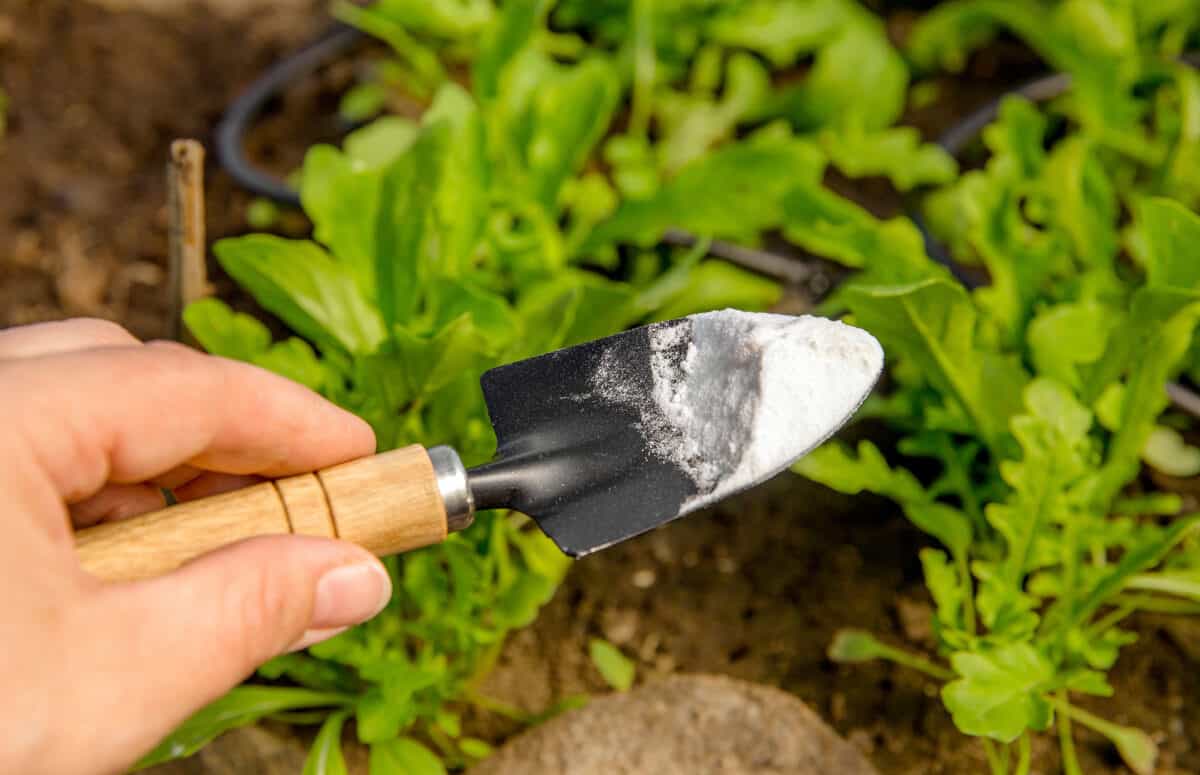
©iStock.com/Helin Loik-Tomson
The study above demonstrated that this easily accessible substance might give control comparable to that achieved with standard chemical fungicides on pumpkins and acorn squash, while compost tea applications were ineffective. When administered early during an infection, milk proved to be quite effective.
At the first sign of infection, it is recommended that milk be diluted 1:10 with water and sprayed on your plants. You can use either liquid or powdered milk. However, current data suggest that milk concentrations of 2% or more significant may be optimal.
For mild to severe infections, a mixture of liquid milk and water (or full-strength milk if you don't have a vast region to treat) can be effective. Some specialists recommend raw or organic milk, while others believe it doesn't matter. The fat content of whole or 2 percent milk may interfere with the effectiveness of treatment.
Spray the liquid on the damaged parts of your plants, including the stems and the backs of the leaves. Keep up the twice-weekly applications until you get the desired results, and remember to reapply after any precipitation.
Even though the spray may get a sour scent in the hot weather, milk spots on plant leaves shouldn't be a concern (they're less unattractive than mildew, at least). It's preferable to dealing with ailing plants.
- The must-have convenient reference guide for every home cook!
- Includes more than 8,000 substitutions for ingredients, cookware, and techniques.
- Save time and money on by avoiding trips to grab that "missing" ingredient you don't really need.
How Milk Spray Works as a Fungicide
Despite the ongoing research regarding using milk as an antifungal spray, specifically against powdery mildew on cucumbers and squash, it's still uncertain how milk works against the fungus.
It appears the milk protein creates an antiseptic effect when exposed to sunlight, which is why you should apply the solution in bright sun. The protein is in the milk fat, though researchers have experimented with whole and skim milk. You can try experiments for yourself with whatever you have on hand. For accurate testing, spray the solution on only some plants while leaving others untreated.
When To Use Milk Spray to Control Powdery Mildew
Milk works best as a preventative measure rather than as a cure. Ideally, apply it during warm, humid weather before powdery mildew appears on your plants. Through experience, you might already know the times of the year when the disease will likely appear.
Spray your susceptible plants when the prime mildew conditions are set in or when foliage shows signs of mildew. If your garden does better than it has in the past with powdery mildew, you can be sure your treatment has had a positive effect.
How To Spray Your Plants With Milk
Using milk sprays as a preventative step is preferable to responding to an outbreak because powdery mildew is a disease that recurs every year. Milk will assist in controlling the issue, but it won't cure it. It is advisable to spray plants you know are vulnerable to attack, such as pumpkin and zucchini, as the plant is beginning to develop. When the weather gets too cold or hot, especially in temperature zones, it promotes the development of fungal spores.
Start by thoroughly combining one part water with one part dry ingredients in a container before adding the mixture to a spray bottle to make the solution. Since spores have a life cycle that lasts between 7 and 10 days, it is ideal to apply the solution weekly to daily.
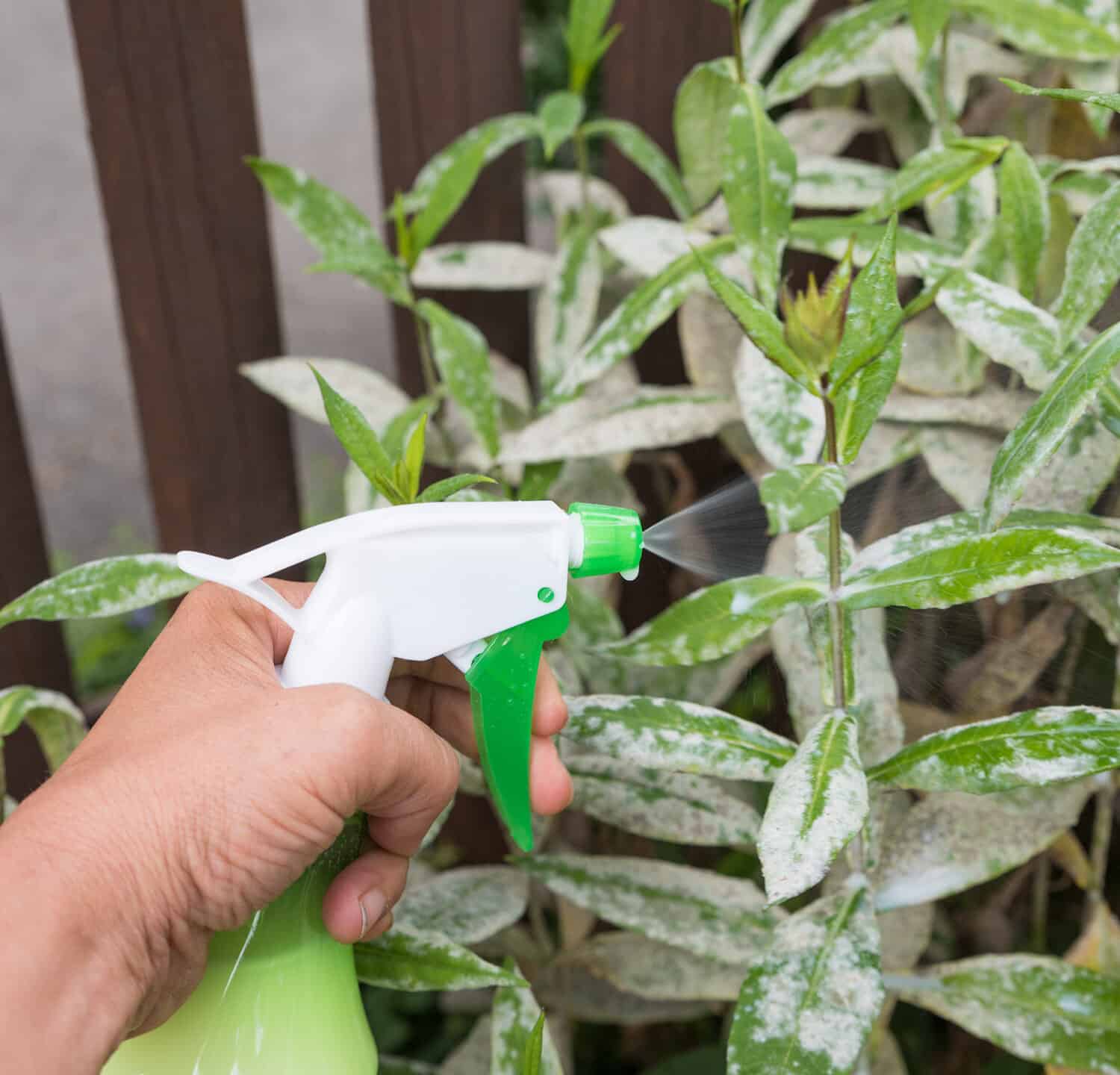
While milk helps to control powdery mildew, it does not cure it.
©SusaZoom/Shutterstock.com
It is recommended to use the spray at least two hours before there is any prospect of rain on a day that is quite calm. To ensure that the solution dries relatively rapidly, the solution should ideally be administered on a generally sunny day. Some people also think that the milk solution's antibacterial capabilities are enhanced by bright sunlight. However, no concrete proof has been discovered to back this up.
How To Identify Powdery Mildew
Though powdery mildew causes plants to appear as if sprinkled with flour, many other issues may appear similar. How, then, can you identify powdery mildew on the leaves? Below are a few characteristics that you need to look out for;
- White, powdery streaks on the leaves, stems, and fruit can be the first sign of powdery mildew.
- Typically found on the leaf surfaces, powdery mildew can also develop on the undersides of the leaves.
- New growth is incredibly fragile. Leaves dry up and turn a dry, yellow color.
- Some leaves may become twisted, broken, or disfigured due to the fungus.
- The powdery mildew spots will grow and eventually cover the entire leaf or affected area in white.
- Even the leaves, buds, and new growth tips will be marred by this. Late in the growing season is when you will typically see these signs.
How To Treat Powdery Mildew
Researchers found that weekly spraying with simple water was just as effective as many other home treatments. Spores thrive in humid environments but are killed off by rain and other wet conditions. If the leaves are damp, they won't be able to germinate or grow.
Many home remedies have shown promise if used promptly in place of plain water. Once the fungus has established itself in the leaves, these measures will only slow the spread.
Methods for Preventing Powdery Mildew
The best method of eradicating powdery mildew, as with many other diseases and pests, is proactive prevention. For your garden, pick plants that can withstand powdery mildew. Cucurbits (melons, cucumbers, squash, etc.) have many mildew-resistant varieties from significant seed providers. Plant where there is more sunlight because powdery mildew tends to grow more frequently in shaded regions.
To improve air circulation around your plants and lower relative humidity, selectively prune crowded spots. Spores on leaves can be removed with the use of overhead irrigation. However, it's best not to rely on this as a prevention strategy because moist foliage can frequently develop other common diseases.
The image featured at the top of this post is ©Julie Vader/Shutterstock.com
